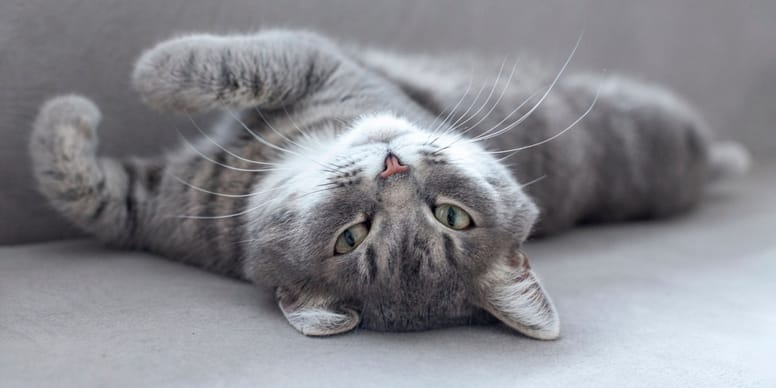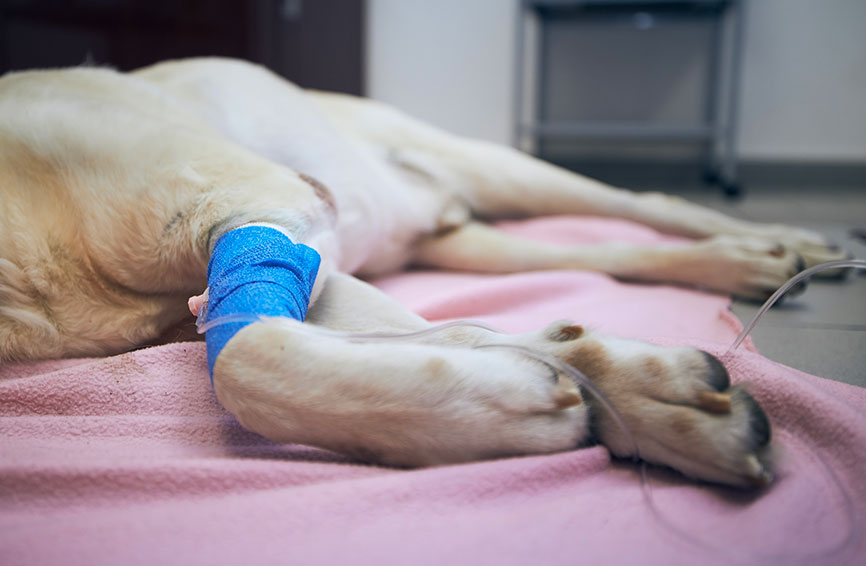
The onset of the first heat varies depending on the breed, lifestyle, or even the body size of the animal. How to recognize a female in heat? Is it possible to naturally relieve a cat's heat? Learn to recognize the behavioral changes of a feline in heat, in order to best support it, so that it can live through this period peacefully.
A female cat's heat: what is it?
Oestrus, also called estrus, represents the phase of a cat's reproductive cycle during which she becomes sexually active. This period is characterized by changes in behavior, linked to the search for a male.
From the moment cats enter a real heat phase, their behavior changes:
- Excitement and attention seeking : they become particularly agitated and can no longer stay still.
- Mating posture : they adopt a specific, well-recognizable posture, with the rump raised and the tail to the side.
- Excessive licking of the genital area.
- Exacerbated condition : a cat in heat is much more cuddly than usual. She tends to rub against furniture, the floor, people, even objects.
- Characteristic meows : the sounds produced are hoarse, repetitive, even plaintive. They are intended to attract males for mating.
- Decreased appetite : a cat in heat eats less during this period and abandons her bowl.
- Urine marking : it happens that females in heat mark the walls and floor with very odorous urine, signaling their sexual activity. This behavior, which is sometimes accompanied by claw marks, is particularly feared by owners, since it encourages the arrival of males.
Be careful, in the event of mating, ovulation is triggered automatically!
These actions are the result of complex hormonal changes, intended to prepare the cat for mating. The intensity of each animal's behavior varies depending on its breed and character. Females with a calm temperament will be less demonstrative than those who are more extroverted.
Remember that a cat's heat is part of her natural reproductive cycle, although it can be disconcerting for owners. By understanding how this process works and recognizing the signs of heat, you will be able to anticipate these inconveniences and tolerate them more easily.
Pattounes in your mailbox?
Let's go !
When does a feline's first heat appear?
The age at which a cat reaches sexual maturity, marking the onset of her first heat, varies extremely from one individual to another. On average, puberty occurs around 7 months of age, but it can last 4 to 12 months.
Several factors explain this individual variation:
- Body growth : the first heat is triggered provided that the weight of the animal is sufficient, that is to say if it reaches approximately 75% of adult weight. This stage depends on the individual growth of the cat, but also on her diet and lifestyle.
- The photoperiod : the daily duration of sunshine plays a crucial role in the occurrence of heat during the year. In nature, winter is marked by a period during which heat is temporarily suppressed. In a domestic environment, the heat of cats can be disturbed. Indeed, these animals being particularly sensitive to light intensity, whether natural or artificial, an excessively dark environment can affect their reproductive cycle.
- The age of the animal : a cat born in spring will generally only reach the weight necessary for puberty between October and December. However, the days that shorten during the winter can delay the onset of heat until the following spring. Thus, the cat will reach the age of 9-12 months during her first heat. Conversely, a cat born in early autumn may go into heat from the age of 5 months, when the days get longer.
- The race : some felines, like the Persian, tend to go into heat late. Furthermore, other cats, such as the Siamese, the Burmese or other oriental breeds, are known to go into heat early.
Thus, the age at which sexual maturity is reached can vary considerably from one individual to another, even within the same breed.
Generally, It is not recommended to breed a cat during her first heat. Indeed, his body and his behavior are not sufficiently mature to support a gestation without risk. Do not hesitate to consult a veterinarian to discuss breeding and birth control options, to ensure your pet's well-being.
The female cat's sexual cycle has several phases, with heat being the most visible period. Females reach sexual maturity at the age of 6-10 months, or even 4 months in certain so-called “precocious” breeds. This period also corresponds to the first warm weather.
In general, these phases follow one another as follows:
- Proestrus : the cycle begins with a period of 1 to 3 days, preceding the heat. The female cat attracts males, but is not yet ready to mate.
- Estrus : during the heat period, the cat becomes more receptive to mating. The duration of estrus varies depending on the cat (around ten days on average).
- Metestrus : this transition period follows the heat and extends over a week. The cat can still accept a partner, but her interest gradually wanes.
- Anestrus : this is the period during which the cat returns to normal behavior and is not receptive to mating. This phase of ovarian inactivity occurs between cycles and continues over several months.
Good to know: in cats, ovulation is triggered by mating. Be sure to limit the meeting of your unsterilized cat with an unneutered male. Indeed, the fertility rate in cats being particularly high, the unexpected birth of kittens occurs too frequently.
The risks associated with heat in cats
A cat's heat is not only a normal part of her sexual cycle, it also poses a danger to her health. A cat in heat may become anxious and agitated, to the point of causing her to escape in search of a partner. This behavior puts her at increased risk of injury, disease (sexually transmitted infections) and unwanted pregnancy. Furthermore, frequent and uncontrolled heat increases the occurrence of certain pathologies, such as uterine infections.
In addition, the chronic stress that the cat finds herself in when she is in heat is a risk factor. Anxiety can have harmful effects on feline health, particularly on its immune system and quality of life.
To reduce these risks, it is important to take steps to calm your cat in heat. If you don't plan to breed her, discuss cat sterilization options with your veterinarian.
Spaying, in particular, is an effective method of preventing heat and its unwanted consequences while contributing to the overall health of your cat. It also contributes to reducing feline overpopulation by preventing the birth of unwanted kittens (see box).
If your cat is in heat and you don't plan to breed her, here are some natural ways to ease her discomfort:
- Gentle stimulation : Use a moistened cotton swab to gently stimulate the genital area of your pussy. This may reduce their need for mating.
- Light and noise : Create a peaceful environment by reducing the light and noise in the room where your cat is. The pheromone diffuser is very effective!
- Play and entertainment : offer her toys, brush her and spend time with her to distract her.
- Show indulgence : be patient and understanding with your animal, heat is temporary.
If your cat's heat is particularly intense or frequent, make an appointment with your veterinarian. The latter may suggest other options, such as sterilization, or provide some advice to calm your feline.
Sterilization: an option to consider
The only way to prevent pregnancy in a cat remains sterilization, generally before the first heat. This is a safe method, which involves the removal of the ovaries. The effects caused by the hormones of the reproductive cycle disappear completely following a hysterectomy.
Neutering is an option to consider for cat owners who do not wish to raise kittens. This surgical procedure, performed by a veterinarian, involves removing the cat's ovaries, which ends her heat cycles and prevents reproduction.
Sterilization has many advantages, including reduction of disease transmission, prevention of feline overpopulation and stabilization of behavior.
Hormonal contraception (pills, injections and implants) may be offered if you plan to breed your cat. However, the side effects are not negligible and should be evaluated with your veterinarian.




